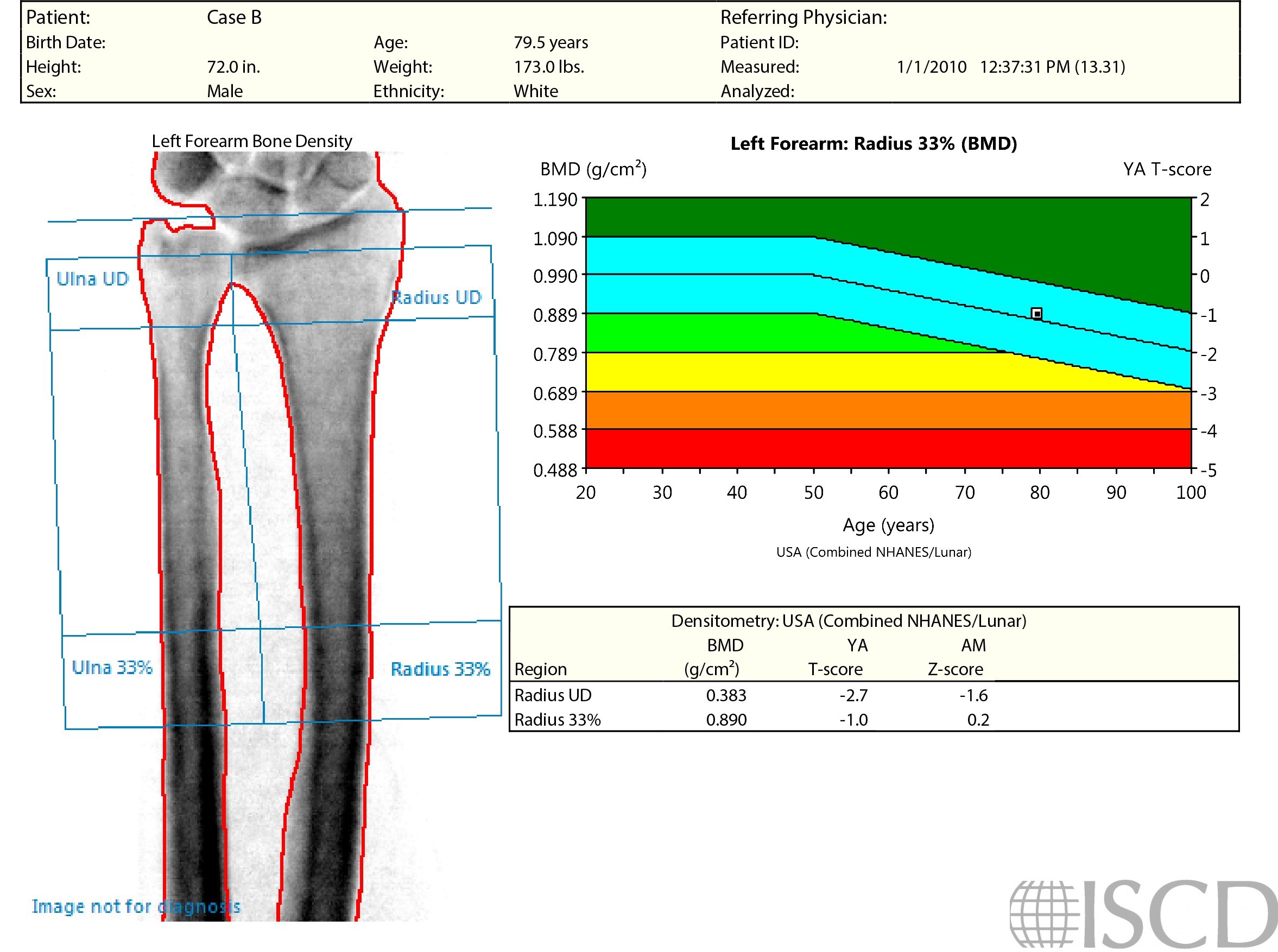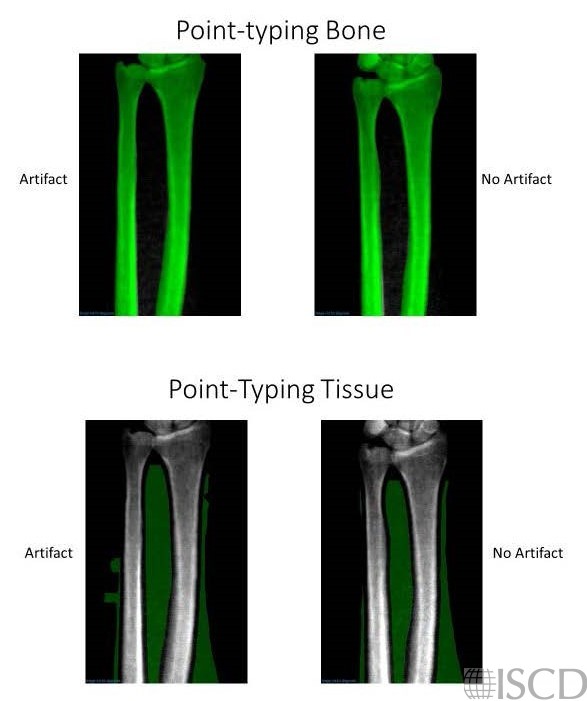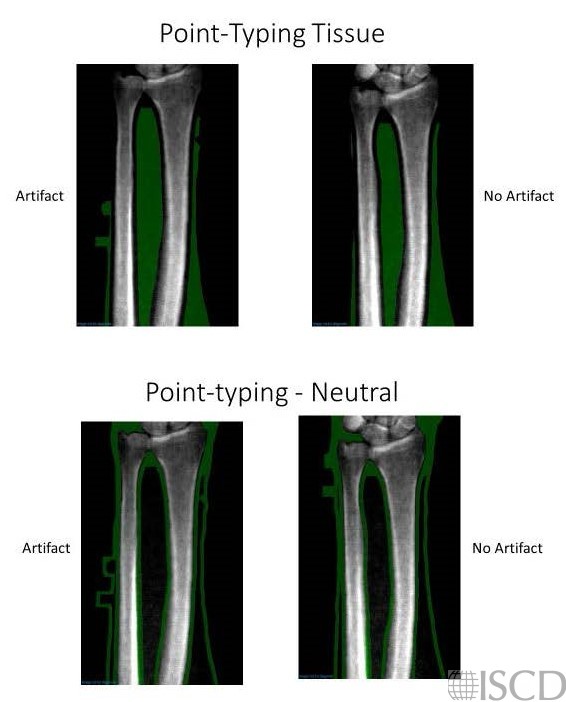Clothing Artifact
These are a set of precision forearm scans acquired on the same day. The images appear to be well-acquired. There are BMD differences between the scans.


There are no errors when evaluating bone identification (top). The tissue typing image identified two areas outside that are lateral to the ulna on the artifact image. These are buttons from a dress shirt that are being included in, and raising the soft tissue measurement. Consequently, a falsely low BMD is being calculated.

Buttons are seen on the air point-typing image (top). On the bottom scan, there are buttons also present, but they are far enough distal that they were not included in the soft tissue measurement. The recommendation is to always scan bare arms and evaluate point typing on radius scans.

This is a set of precision scans which are acquired on the say day. There are BMD differences. The images appear to be well acquired with no obvious difference between scans. Clothing artifacts can affect the accuracy of forearm scans. The recommendation is to always scan bare arms and evaluate point typing on radius scans.
Diane Krueger, BS, CCRC, CBDT, University of Wisconsin Clinical Research program
• Krueger, D., et al., Positioner and clothing artifact can affect one-third radius bone mineral density measurement. J Clin Densitom, 2013. 16(2): p. 154-9.
• Fidler, E., D. Krueger, and N. Binkley, Do textiles impact DXA bone density/body composition results? . J Clin Densitom, 2015 18: p. 434.
• McNamara, E.A., et al., Effect of Clothing on Measurement of Bone Mineral Density. J Clin Densitom, 2016. 19(2): p. 216-9.
• Siglinsky, E., N. Binkley, and D. Krueger, Do Textiles Impact DXA Bone Density or Body Composition Results? J Clin Densitom, 2018. 21(2): p. 303-307.